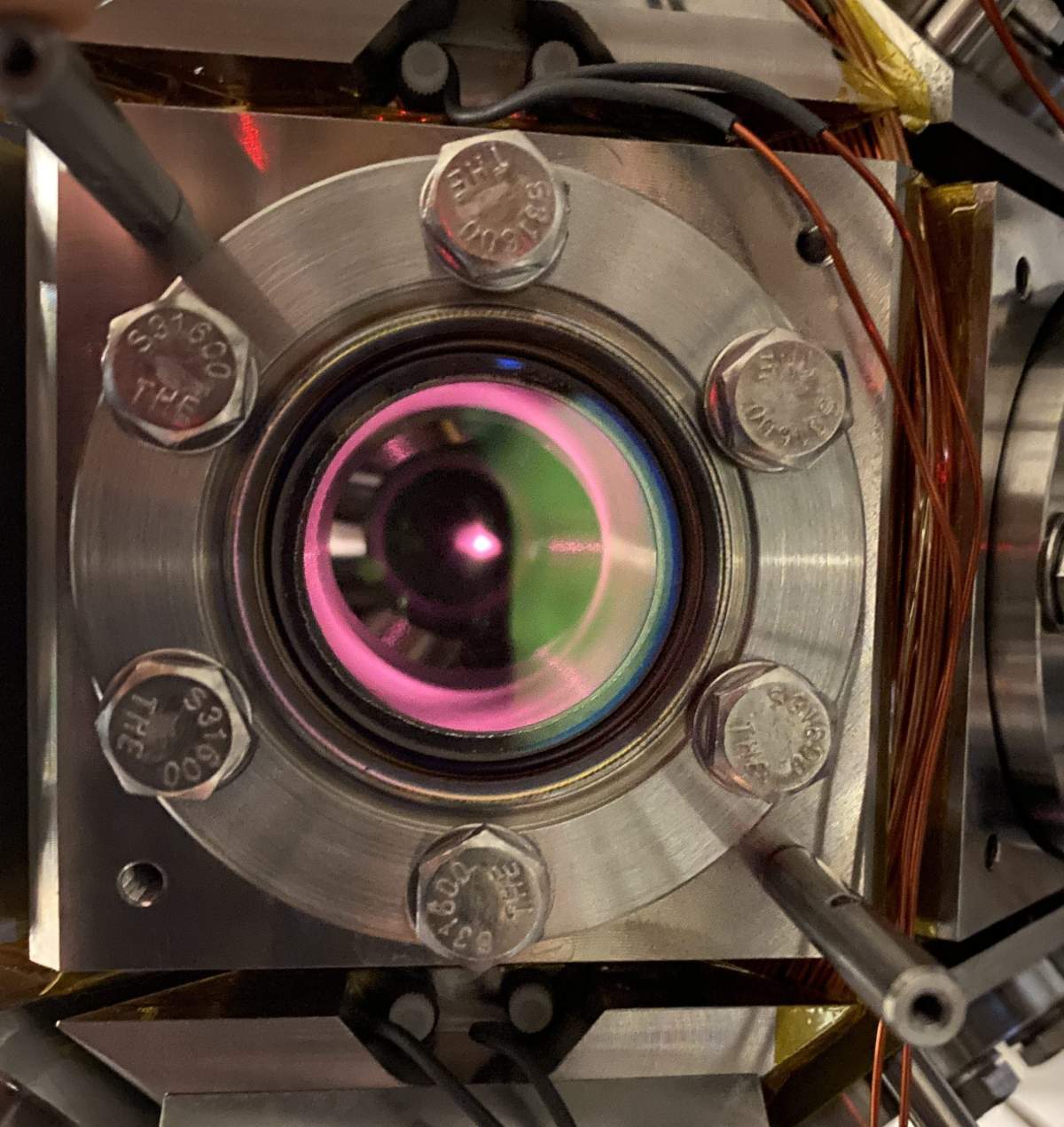Down University of New Brunswick stairs, into what one researcher called “the dungeon”, through a small window on a circular metal contraption, a small red cloud pulses. Millions of cold atoms are in the cloud. Researchers plan to use them to help with navigation where GPS can’t reach.

“This cloud of a hundred million rubidium atoms is the coldest matter you’ll find in the Maritimes,” Brynle Barrett, the project’s lead researcher, said.
By making the atoms very cold, he said they behave like waves. Researchers can then measure interference with the waves and find the gravitational field. That helps with navigation where GPS falls short, like underground or underwater.
The project, in collaboration with groups in Ontario, Australia and Amsterdam, recently received almost $3 million from Canada’s Department of National Defence.
Philippe Hébert is the director general of innovation with the department, and said the funding is like a promise that groups will develop innovative ideas with the Canadian military in mind.

Get breaking National news
And navigation is important for the military.
“Precision navigation and timing, PMT, is really what enables precision munitions to be deployed, it enables as well the Canadian forces to know where every unit is,” Hébert said.
Barrett said the project is also useful commercially, like for civil engineers who want to measure the distance from sea level. And it gives university students an opportunity to gain valuable research experience.
Kamal Shalaby is a master’s student, and has been working on circuits for the lasers that keep the atoms cold since his undergrad.
“It’s one of the unique projects UNB has to offer, especially in physics, and there’s a lot of exciting technology that we get to develop,” he said.
The specialized skills will also help once students graduate. Barrett said Canada is looking to improve quantum expertise nationally as part of a quantum strategy.
“We’re contributing to that talent pool by training students at the early stages of their careers to go on in the industry or academia,” he said.
Shalaby is finishing his work on the project this summer, and he said he was surprised by how much he learned about circuits while working with experts in the field.
“UNB has a lot to offer, actually. Sometimes you think it’s a small institute, but if you find the right place, it has a lot to offer,” he said.









Comments